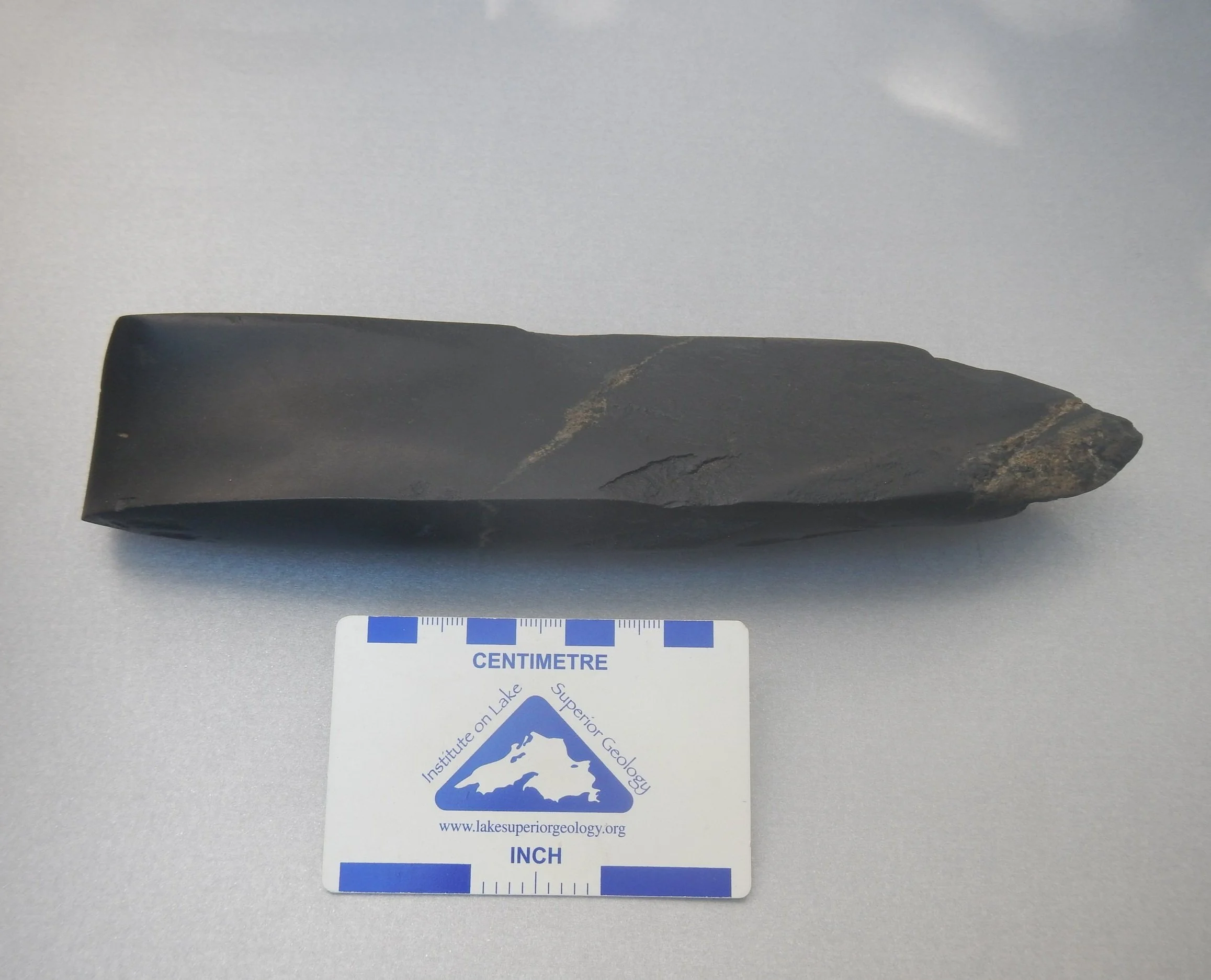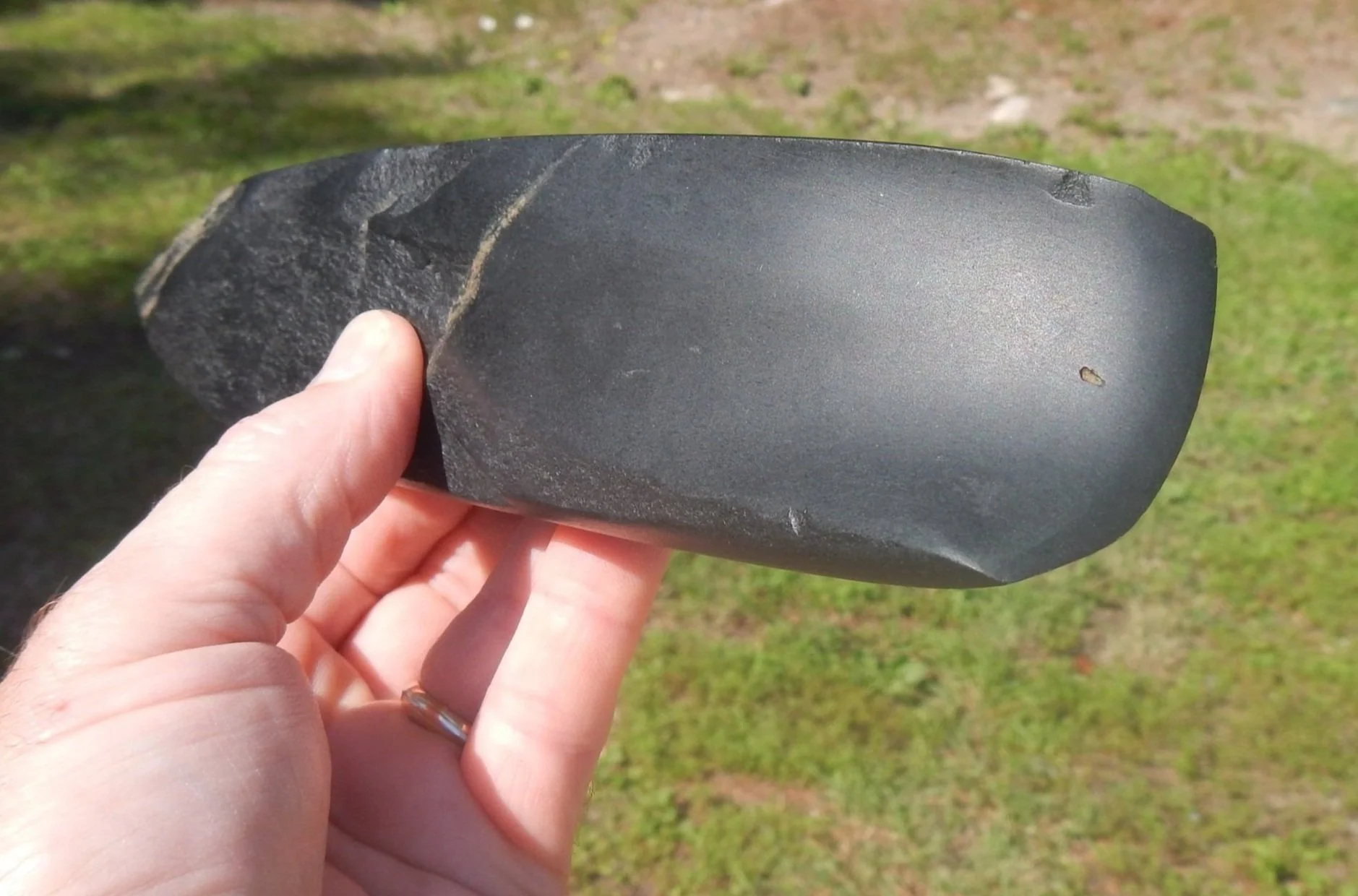Grooved Gouge
In the early spring of 1991 while I was walking along the submerged shoreline of an island on Lac Seul I noticed a rock that was completely black and rectangular in shape. This struck me as a bit peculiar so I bent over to pick it up. I should mention that this rock was situated about 20 inches underwater and also that I was wearing a pair of hip waders which enabled me to move along an undulating shoreline through various depths of water without worrying about getting a boot full (which had happened on previous occasions when I was wearing just a regular pair of rubber boots).
Anyway, I bent over and plunged my hand beneath the frigid waters to grab the rock so that I could lift it up and get a closer look. As I grasped the rock and picked it up, I quickly realized that the visible, rectangular shaped section of the rock that I had seen underwater was only a small portion of the complete piece. Both ends of the object had been covered over by mud and silt which, with the exception of some clay that remained within the groove of the artifact, slid off as I lifted it clear of the water.
Grooved gouge with scale.
I removed the remaining clay from the grooved section of the piece and then gave it a quick dunk in the water to rinse it off. I was both amazed and exhilarated as I examined the highly polished artifact that I held in my hand. On a trip to Toronto previous to this discovery I had visited the Royal Ontario Museum (ROM) and had observed a similar artifact on display there classified as a “grooved gouge” (3-d model courtesy of Lakehead University anthropology department). The curved end of the artifact with the “groove” is quite sharp. My understanding is that this tool would have been hafted within some kind of wooden handle and likely functioned as chisel for wood working activities. This particular gouge is 23.5 centimeters long, 5.4 centimeters wide and weighs 680 grams.
Ventral side of grooved gouge showing sharpened curved end.
Another interesting aspect of this artifact is that instead of being produced through the indirect or angled percussion process of “flaking” or “knapping”, it appears to have been manufactured using the technology of “pecking and polishing”. That is, the grooved gouge was shaped by directly striking the surface of the stone to pebble (i.e. peck) it. Following this the “pecked” surface was abraded or rubbed with another rock or an abrasive material to produce a smoothed and high polished surface. Grooved gouges have not frequently been recovered from within the boreal forest and, as such, represent a rare find and perhaps the epitome of a “cool discovery”!
Dorsal side of grooved gouge showing highly polished finish.




